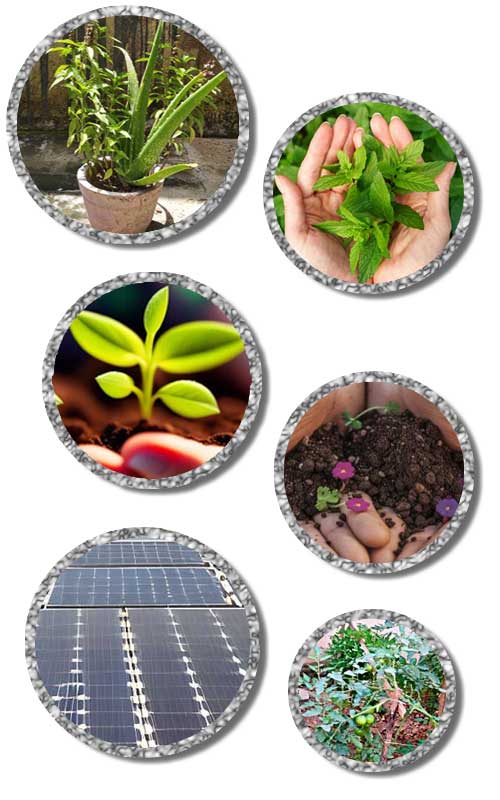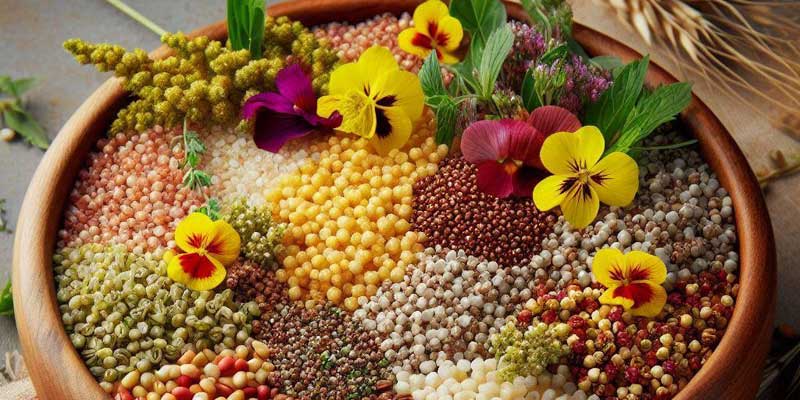Millets, a group of small-seeded grasses widely cultivated in India, Africa, and other parts of Asia, are gaining popularity as a sustainable and nutritious alternative to more resource-intensive grains like wheat and rice. Known for their adaptability to arid climates and marginal soils, millets have been a dietary staple for centuries. Beyond their environmental benefits, they are packed with health advantages, making them a win-win solution for personal well-being and the planet.
What Are Millets?
Millets are a diverse group of cereal grains, including pearl millet (bajra), finger millet (ragi), foxtail millet (kangni), proso millet, and barnyard millet. They are gluten-free and rich in protein, dietary fiber, vitamins, and minerals like iron, calcium, and magnesium.
Health Benefits of Millets
- Rich in Nutrients: Millets are a powerhouse of essential nutrients. They contain high levels of protein, dietary fiber, important vitamins like B-complex vitamins, and minerals such as iron, calcium, and magnesium. These nutrients support overall health and immunity.
- Promotes Heart Health: Millets are rich in magnesium and potassium, which help regulate blood pressure and improve heart health. Their high dietary fiber content helps reduce bad cholesterol levels, lowering the risk of cardiovascular diseases.
- Aids in Weight Management: The high fiber content in millets promotes satiety, reducing hunger pangs and aiding in weight management. Millets also have a low glycemic index, making them an excellent choice for managing blood sugar levels and preventing overeating.
- Improves Digestion: Millets are easily digestible and act as natural prebiotics, supporting gut health. Their high fiber content prevents constipation, enhances bowel movements, and maintains a healthy digestive system.
- Gluten-Free Alternative: For individuals with gluten intolerance or celiac disease, millets are a safe and nutritious alternative to wheat-based products.
- Regulates Blood Sugar Levels: Millets, especially foxtail and finger millet, have a low glycemic index. This means they release glucose slowly into the bloodstream, preventing sudden spikes in blood sugar levels and helping manage diabetes.
- Strengthens Bones: Millets like ragi are exceptionally high in calcium, a mineral crucial for strong bones and teeth. Regular consumption of millet can help prevent osteoporosis and maintain bone health.
- Detoxifies the Body: Millets are rich in antioxidants, which help combat free radicals in the body, reducing oxidative stress. This detoxifying effect boosts immunity and reduces the risk of chronic diseases.
The Environmental Benefits of Millets
- Low Water Requirement: Unlike water-intensive crops like rice and wheat, millets require significantly less water. For instance, rice consumes approximately 5,000 liters of water per kilogram of grain, while millets need only 300-400 liters. This makes them an ideal crop for regions facing water scarcity.
- Drought Resilience: Millets thrive in arid and semi-arid conditions with minimal inputs. Their deep-rooted systems allow them to withstand prolonged dry spells, making them a lifeline for farmers in drought-prone areas.
- Reduced Greenhouse Gas Emissions: The cultivation of rice is a major source of methane, a potent greenhouse gas. Millets, on the other hand, produce negligible emissions during their growth cycle, contributing to a lower carbon footprint.
- Soil Health Improvement: Millets require fewer chemical fertilizers and pesticides, reducing the risk of soil and water contamination. They also play a role in maintaining soil fertility by enhancing organic matter and preventing soil erosion.
- Biodiversity Support: Growing millets diversify cropping systems, reducing the reliance on monocultures like wheat and rice. This biodiversity strengthens ecosystems and promotes resilience against pests and diseases.
A Sustainable Future with Millets
Millets align with global efforts to combat climate change by promoting sustainable agricultural practices. Their ability to grow in degraded soils and under extreme weather conditions makes them a viable option for addressing food security in a warming world. By replacing water-intensive crops with millets, farmers can conserve water, reduce emissions, and build climate-resilient food systems.
Encouraging Millet Consumption
Despite their benefits, millets are underutilized in many parts of the world. To promote their adoption, governments and organizations need to:
- Create Awareness: Educate consumers about the health and environmental advantages of millets.
- Incentivize Farmers: Provide subsidies and support for millet cultivation to make it more economically viable.
- Integrate into Diets: Encourage the incorporation of millet-based recipes in schools, workplaces, and households.
Conclusion
Millets are not just super grains; they are a beacon of hope for a healthier population and a healthier planet. By incorporating millets into our diets and promoting their cultivation, we can tackle pressing challenges like malnutrition, lifestyle diseases, water scarcity, and climate change. With their myriad health and environmental benefits, millets are truly a sustainable solution for our collective future.








